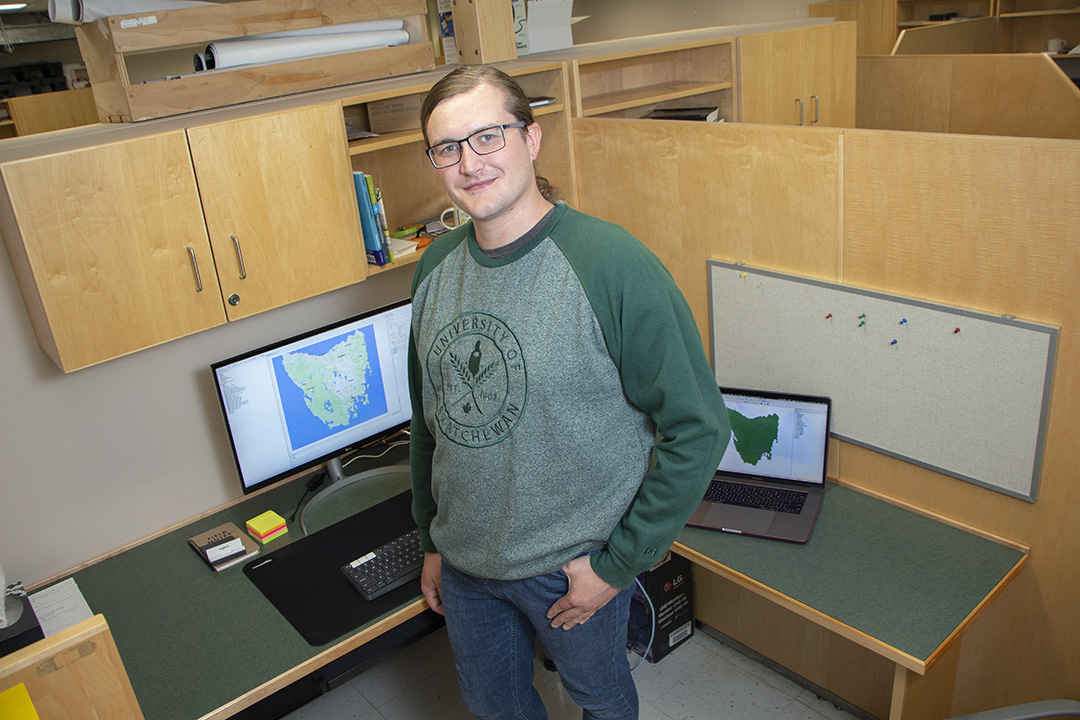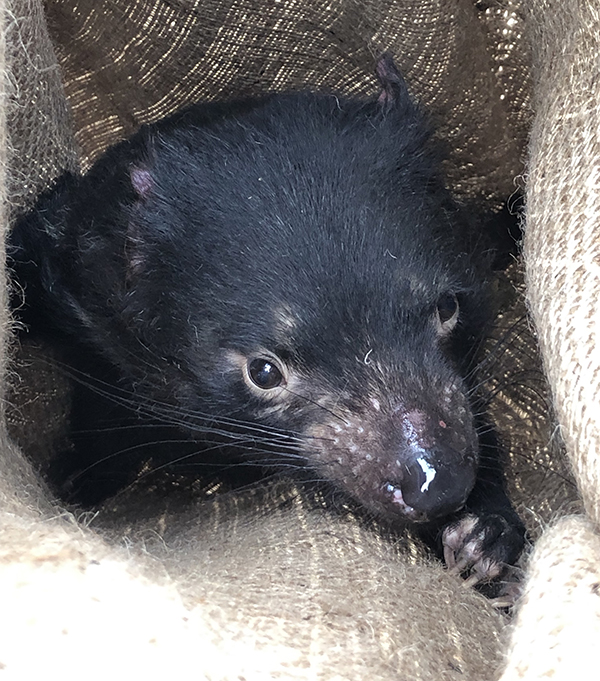
USask graduate student uses computer modelling to help save Tasmanian devils
A University of Saskatchewan (USask) graduate student is collaborating with international partners in an effort to stem the decline of Tasmanian devil populations through the use of computer modelling.
By Shannon BoklaschukOnce found widely throughout Australia, Tasmanian devils are now indigenous only to the island state of Tasmania. The Australian government has listed the large carnivorous marsupials as vulnerable due to the spread of an unusual contagious cancer called devil facial tumour disease (DFTD).
The illness, which was first found in 1996, causes Tasmanian devils to develop large lumps around their heads and mouths. DFTD is transmitted when cancer cells enter bite wounds.
“They take hold because the immune system doesn’t recognize it as a foreign body. I think a big part of that is because genetic diversity is really low in the devils, so it just takes hold and starts growing,” said USask student and alumnus Paul Lamp (BSc’19), who is currently pursuing a master’s degree in the College of Arts and Science’s Department of Computer Science.
“It’s a horrendous disease. They eventually die because of starvation because they can’t feed themselves anymore. It breaks the bones and everything once it gets big enough.”
The debilitating condition has already killed about 80 per cent of the Tasmanian devil population, Lamp said. In an effort to boost the Tasmanian devil numbers and to stop the spread of the disease, he is working with the San Diego Zoo and the Save the Tasmanian Devil Program (STDP)—an initiative of the Australian and Tasmanian governments—to build a computer model with a geographic information system (GIS) map at its centre.
“What we’re trying to do is capture behaviour of individual Tasmanian devils, so we use this software called AnyLogic,” he said, noting data streams related to Tasmanian devil movements, interactions, disease state and various threats—such as being hit by vehicles or killed by dogs—can be captured and placed into one comprehensive map.

The simulation software allows users to safely test and explore different “what-if” scenarios. As a result, Lamp can investigate various types of interventions aimed at boosting the Tasmanian devil population and reducing disease transmission before anything is actually tried in the wild.
In the computer model Lamp is working on, individual Tasmanian devils will make decisions based on their needs, such as finding food. In the process, a male devil may seek out a female during mating season, or encounter another male devil and get into a fight.
While there’s some research suggesting the animals won’t go extinct because of the disease, “it’s still a concern,” said Lamp.
“So this model is then used to investigate different interventions. So, for example, what if we move a devil around from this population to another population to try and boost those numbers up? And how do we do that so we don’t also boost up the number of disease incidents, so new diseases occurring in different devils?”
Lamp, who was born in Germany, moved to Saskatoon seven years ago and completed his high school education at Bedford Road Collegiate before earning his Bachelor of Science degree in computer science at USask. He began working on the Tasmanian devil project in January 2019 and it will form the basis of his master’s thesis. The project is expected to run until December 2020.
Lamp works in USask’s Computational Epidemiology and Public Health Informatics Lab (CEPHIL) under the supervision of computer science professor Dr. Nathaniel Osgood (PhD). Osgood was contacted by the San Diego Zoo about developing a Tasmanian devil model, and Lamp, who previously worked on the issue of chronic wasting disease (CWD) in Saskatchewan deer during an undergraduate class, was asked to work on it.
In May, Lamp had the opportunity to travel to Tasmania, where devils were captured and data was obtained. One of the first things Lamp noticed about the devils is that “they are really cute.”
“They’re really adorable,” he said, noting they don’t live up to their cantankerous reputation. “Because they’re so tame, they don’t do anything (when they are trapped).”
Lamp is enjoying working on the Tasmanian devil project, which he describes as “amazing.” He finds his time at CEPHIL, where he focuses on real-life issues such as the decline of the Tasmanian devil, to be rewarding.
“We’re hoping this will give better insight into the interventions and what will work and what won’t, and what will have the greatest promise to actually save this species,” he said.

